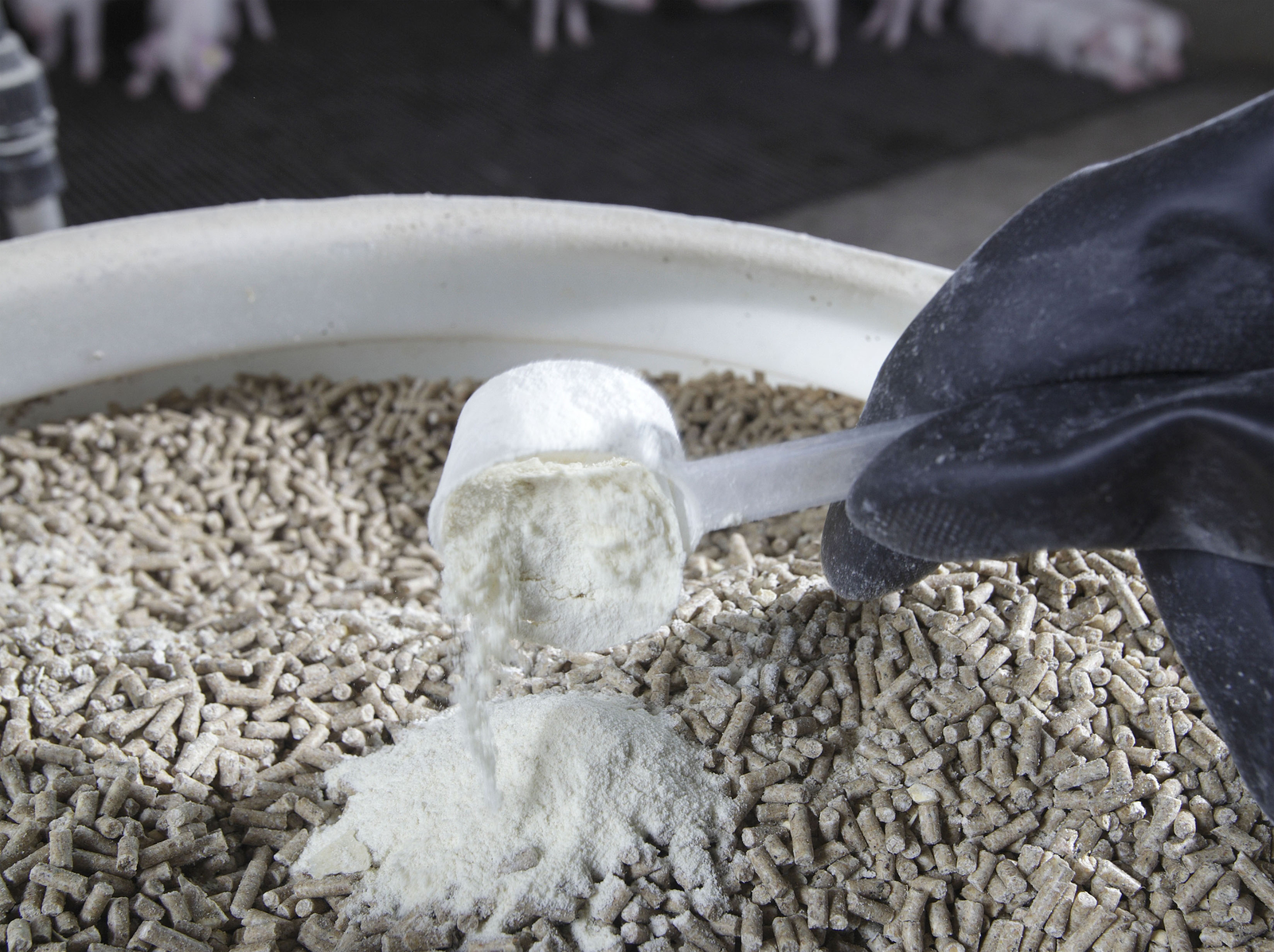A global shift to antibiotic free production

Livestock sectors around the world are moving towards production systems that are less dependent on antibiotics. A short review on why this is needed and the solutions for optimising animal diets.
Since their discovery in the last century, antibiotics represent an essential tool for treating human and animal diseases and save millions of human lives per year. The modern animal production industry has used antibiotics for preventative rather than therapeutic effects to ensure performance (hence the name “antibiotic growth promoters”), causing interference of their efficacy on the one hand and drug resistant bacteria that are threatening human health on the other.
Transmission of resistance
Scientists started raising questions regarding feed and food safety and threatening implications on medical disease treatment in humans, when it became evident that the sub therapeutic administration of antibiotics to food animals can lead to multi resistant germs.
Resistant pathogens increasingly occur, when antibiotics are used permanently, especially in subtherapeutic dosages. Though the antibiotics kill most of them, some survive for instance due to a mutation gene, encoding for a modified penicillin binding protein (= transpeptidase, actually being responsible for the correct conjunction of cell wall components) hence making it impossible for certain antibiotics to bind. Consequently, the transpeptidase can unimpededly continue in supporting the cell wall synthesis. Thereby, the resistance encoding genes are also transferred per interspecies communication. Contaminated animal derived food or direct contact with contagious animals as well as animal manure – spread as fertiliser to the environment – can easily lead to transmission of resistant bacteria to humans. Additionally, frequently prescribing antibiotics in humans by doctors of course contributes to the resistance problems.
Rethinking of consumers
Today, consumers have never been more inquisitive and sceptical towards the origin of their food. The current consumers are much more concerned about a responsible handling of antibiotics and endorse to avoid any useless medication in livestock. Their preferences clearly tend towards purchasing products from animals raised without antibiotics. Curtailing the routine overuse of drugs in animal agriculture and limiting use strictly to therapeutic purposes under veterinary medical supervision in case of acute infections in sick animals, is not only the critical way to go, it is practical and also economically feasible. Above, these measurements would reduce the threat of developing illnesses with resistance to antibiotics in animals and thus humans alike.
Natural growth promoters
In recent years and especially since the ban on antibiotics in livestock feeding in 2006 by the European Union, phytogenic (= plant derived) feed additives (PFA) have achieved increased attention in research as possible, natural alternative to antibiotic growth promoters. In 2011 South Korea followed this example and also prohibited the administration of antibiotics to food animals as well. In the US, the use of certain antibiotics in livestock production for human consumption is already prohibited. By 2017 a complete phase-out of antibiotics is aspired by US regulators in order to curb a rise in more deadly forms of foodborne pathogens.
Next to already rather well established feed additives such as pro and prebiotics, organic acids or special enzymes in animal feeding, PFAs represent another efficient tool to meet the current and upcoming challenges of livestock production. Generally, plant derived additives focus on an improvement of digestibility of the feed ingredients by enhancing the activity of enzymes and promoting the growth of useful gut microbiota whilst at the same time reducing the pathogens. Many plants (e.g. thyme, oregano) demonstrably show antioxidant efficacies that improve nutrient supply of cells, strengthen the cellular defence against oxidative substances and minimise damages caused by bacteria and oxidative stress, respectively. As a consequence, these mechanisms lead to an improved health status of animals, allowing them to fully exploit their genetic potential. Enhanced feed efficiency and the optimised feed conversion ratio involved, as well as the coincidental increasing daily weight gains are represented in lower production costs, which in turn raises the profitability of the animal production holding. At the same time, proven phytogenic feed additives meet the demands of the consumers in contributing to a safe feed to food chain, raising animal welfare and yet being sustainable and 100% natural.
Save on feeding costs
In addition, PFAs save costs and increase profitability. Feeding costs comprise 60-70% of overall production costs- and they are continuously on the rise. In a time of high price and sourcing volatility of feed ingredients such as soy bean meal or cereals, feed ratios are often made of by-products from human food production such as pulp or DDGs. PFAs increase palatability, digestibility and nutrient uptake and hence, increase profitability. Not all plant extracts tick the box of being a ‘zootechnical additive’, and approved by EFSA. The ones that have gone through the whole registration process are scientifically and commercially proven phytogenic growth promoters.
References are available on request
Article featured in AllAboutFeed 22.7 2014











